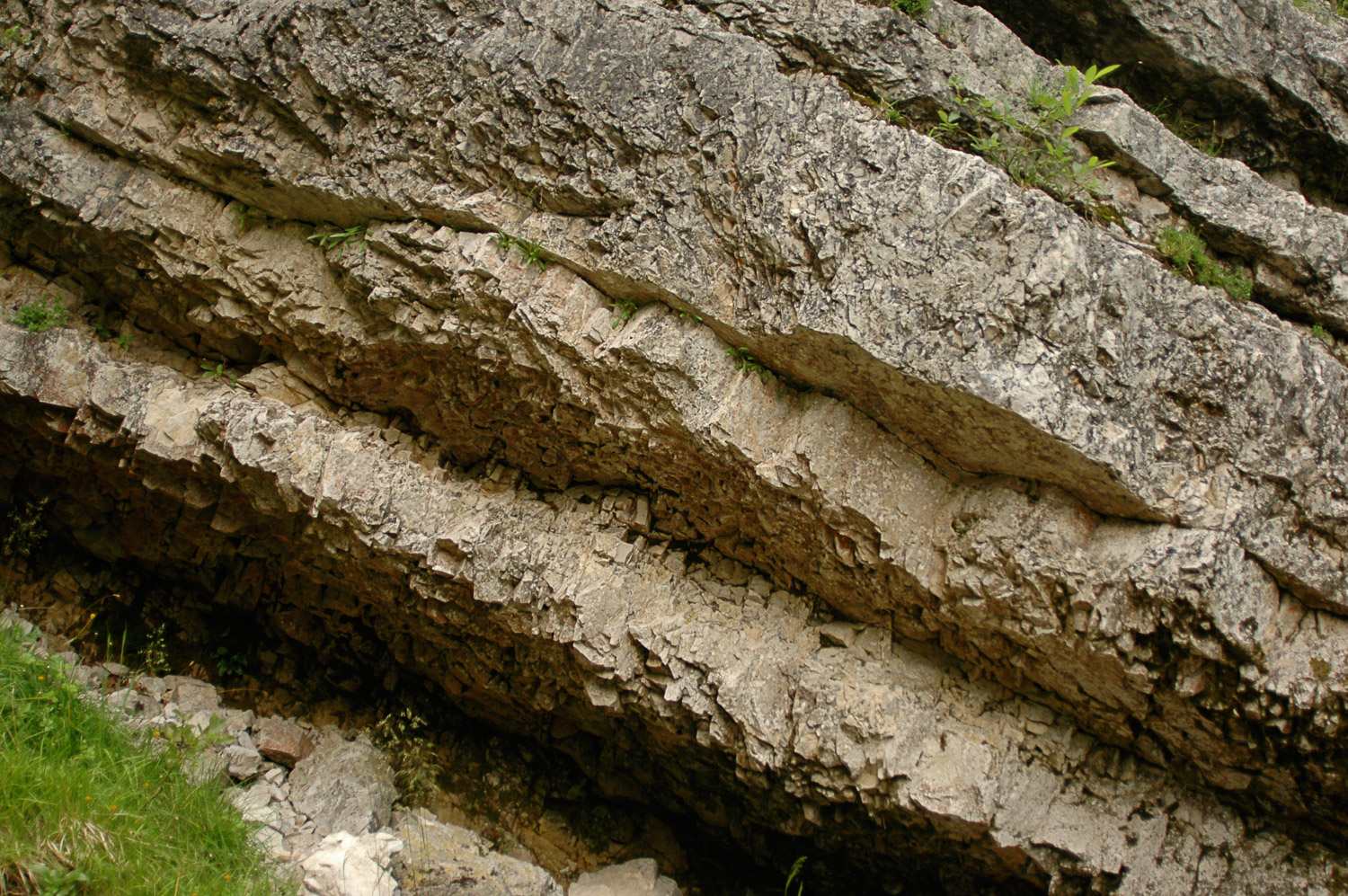

Limestone and dolomite: The backbone of the Limestone Alps
Throughout the Triassic, the seabed sank. It was only a fraction of a millimetre a year, but for 45 million years. Nevertheless, the sea did not get any deeper, because the deposition of the calcareous remains of algae and marine animals compensated for the subsidence. The adjacent Gesäuse Mountains give an idea of this. Here, about 3000 m of rocks were deposited in shallow water throughout the Triassic. There are mainly two types of rocks: In the deeper part it is dolomite. There are hardly any larger rocks in the dolomite, it is criss-crossed by many branching gullies. In the steep summit area with its jagged rocks are the rock faces of the Gesäuse, famous among climbers. They are made of Dachstein limestone. Characteristic are the 10 to 20 m thick limestone banks, whose boundaries look like thin lines from a distance.
These are the two most important rocks of the Limestone Alps that we can distinguish from a distance. Among these, dolomite is the most common rock in the Steirische Eisenwurzen Nature and Geopark. It is quite brittle and breaks up into small, angular pieces. It was formed in sections of the sea that were largely cut off from the open sea. As a result, the oxygen content of the water was low and the evaporation of the water meant that the minerals dissolved in it, especially rock salt, were highly concentrated. The result was that hardly any animals lived in these sections of the sea, but there were enormous quantities of lime-secreting algae. The deposits, often several hundred metres thick and consisting of the lime shells of the algae, were transformed into dolomite under the influence of bacteria. Like all limestones formed in the sea, Dachstein limestone consists of fragments of algae, corals, lime sponges and shells that have been more or less crushed by the waves. The Dachstein limestone was deposited in a section of the sea that was constantly connected to the ocean. It is estimated that every 1000 years the sea connection was interrupted, and for a time a few centimetres of dolomite or even nothing at all was deposited here. These are the boundaries between the limestone beds.




